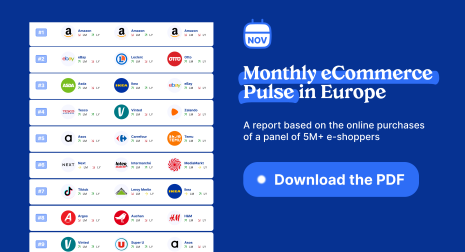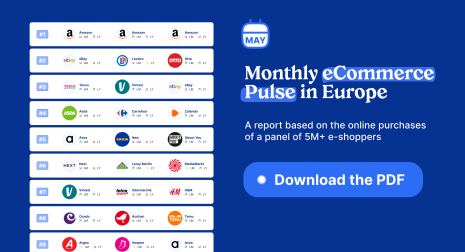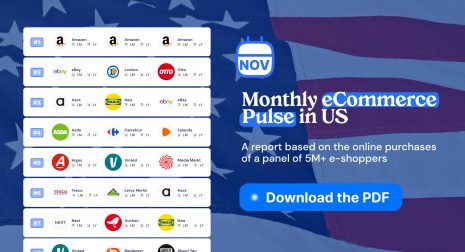With the current economic climate, consumers are limited in terms of budget. They have become very cautious in their spending and have to make trade-offs (between what they buy, where they buy and how much they buy).
Here are the 4 key trends for 2023 we will approach in this report about E-commerce in the UK.
Soaring inflation leads households to increase online spending while cutting back on non-essential purchases
The average amount spent online increased by 11% in Q1 2023 compared to Q1 2022, rising from £399 to £442. This surge favors essential categories: the share of food expenses grew from 25% to 27% in Q1 2023 compared to Q1 2022, while the Home & Appliances category increased from 15% to 17%. Conversely, fashion spending fell from 23% to 20% and Electronics & Computers from 20% to 18%.
“With the current economic climate, consumers have limited budgets. They’ve become cautious with their spending, making trade-offs between what, where, and how much they buy,” says Guillaume Coudry, Chief Customer Officer at Foxintelligence.
Second-hand shopping booms amid inflationary pressures
The second-hand market penetration rate rose from 16% in 2020 to 23% in 2022. Although this trend is evident throughout Europe, it’s particularly pronounced in the UK. People increasingly buy second-hand for environmental reasons, but now also for economic reasons in the current inflationary context. While second-hand shopping remains popular among younger generations, Generation X (1960 – 1979) increasingly adopts this consumption pattern, accounting for 15% of the second-hand market in 2022.
TikTok Shop conquers the beauty market
Launched in the UK in November 2021, TikTok Shop has firmly established itself within the English e-commerce landscape:
● AOV is 40% higher than the average beauty shopper
● The number of purchases is 37% higher than the average beauty shopper
● TikTok captures 17% of customers’ online beauty budgets, second only to Amazon
Any question?
Please feel free to reach us: contact@foxintelligence.fr




